On 1 December 2018, Romania celebrated its centennial anniversary. To mark this moment on my travel blog, I published an article containing 100 of the best reasons to visit Romania, my home country.
Romania is a beautiful and intriguing nation with a rich history and culture. There are numerous reasons to visit Romania, from its breathtaking natural beauty to its lively cities. I’ll highlight what is Romania known for to add to your Balkan travel bucket list. There’s something for everyone in Romania, from its beautiful architecture and historical sites to its delectable cuisine and welcoming locals.
Though everyday life here can sometimes seem tedious to me, I recognize and appreciate the fact that I was born in a country with so many natural beauties. And, despite recent-history events from the political sphere, I still believe that my home country is a place you (or anyone!) should come to. So keep reading this article to find out why you should visit Romania, then come and see for yourself why this amazing country is one of Europe’s most undervalued travel destinations.
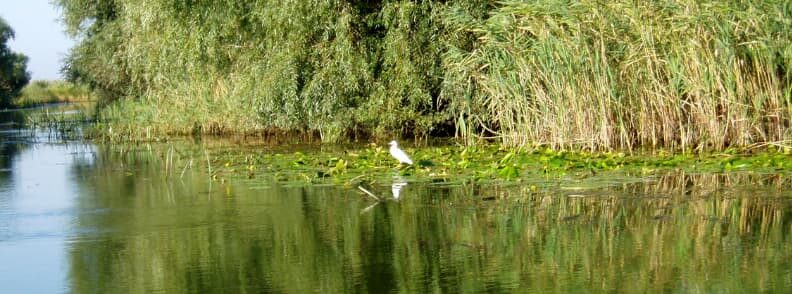
1. The Danube Delta
To the South-East of Romania, at the border with Ukraine and, for a very brief length, the Republic of Moldova, the Danube finishes its journey into the Black Sea. The river forms a delta when splitting into three arms: Chilia, Sulina, and Saint George (Sfântu Gheorghe). On the little ground left in between, humans live a simple life, depending on fishing and tourism to make a living.
There is much to see in the Danube Delta Biosphere Reserve, from beautiful carpets of waterlilies and luxurious vegetation to colonies of migratory birds and various fish. The Danube Delta is not only the home of over 360 bird species and more than 45 fish species but also that of the wild horses in the Letea Forest.
The Danube Delta is always one of the top reasons to visit Romania you’ll get from people who have been to my country or from locals.
2. Măcin Mountains National Park
Not far from the Danube Delta, in the Dobrogea region of Romania, you can visit the Măcin Mountains National Park (Parcul Național Munții Măcinului). This is the home of over 1,770 plant species (72 are rare or vulnerable, and 27 can only be found here), 181 bird species (37 are endangered), and more than 900 butterfly species.
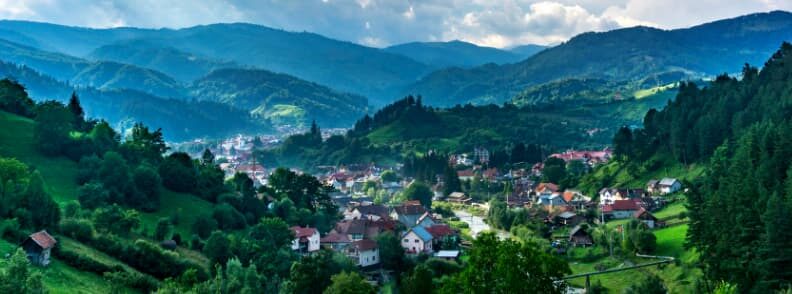
3. The Carpathian Mountains
Moving away from the vicinity of the Black Sea and towards the center of Romania, we reach the Carpathian Mountains, surrounding Transylvania. The arch they form across Romania, but also the neighboring countries, is 1,500 km long, making them the second-longest mountain range in Europe.
The Carpathian Mountains are not just one of the top reasons to visit Romania, but also a very good reason to visit its neighboring countries: Ukraine, Hungary, and Serbia.
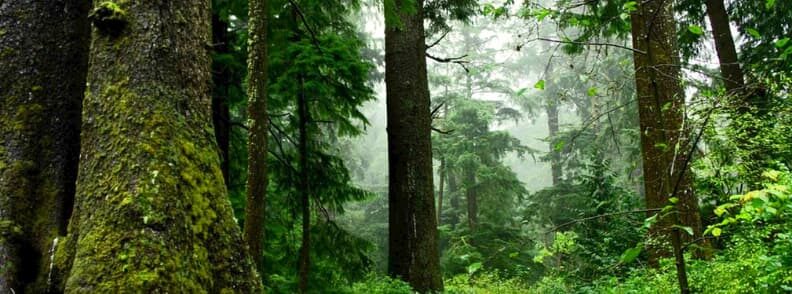
4. The virgin forests of Romania
In Romania, you will find the second-largest surface of virgin forests in Europe. Over half of these forests are in the Carpathian mountains. There are many NGOs fighting to protect our forests from illegal and/or mass tree cuttings, but there is a long way to go until this unique natural resource can be considered safe.
If the virgin forests aren’t good enough reasons to visit Romania, I don’t know what is. But keep reading if you’re looking for another kind of travel inspiration.
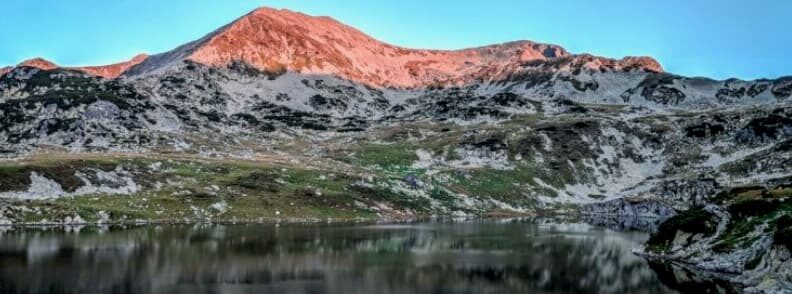
5. Retezat National Park
The Retezat National Park (Parcul Național Retezat), in the Carpathians, is the home of 1190 plant species, a third of the ones one can find in Romania. This includes rare and endangered plant species, but also 90 plant species that exist only here. The Retezat National Park is also the home of 185 bird species, and of large carnivores (bears, wolves, lynxes) and herbivores (chamois, deer, boars).

6. Transfăgărășan
The Transfăgărășan appears in travel articles as one of the most scenic routes in the world. The road, which climbs to 2,042 meters, is also on the bucket list of many car enthusiasts after watching Top Gear’s episode about Romania.
Under Ceaușescu, it only took the workers from 1970 to 1974 to cut a pass through the mountains. It was a strategic move, to ensure quick military access across the mountains in the event of a Soviet invasion. However, the building of the Transfăgărășan came at the cost of the lives of many of its workers. Official sources mention only 40 dead soldiers, but the unofficial ones put the number into the hundreds.
The Transfăgărășan, despite its dark beginnings, is now a splendid route attracting lots of tourists. Many of them come with their bike, to enjoy the speedy and thrilling descent toward Sibiu.
7. Curtea de Argeș
Before passing the Carpathians through Transfăgărășan, one should also make a stop at Curtea de Argeș, the former capital of Wallachia, uniting the lands south of the Carpathians.
A beautiful place to visit here is the Orthodox Cathedral Curtea de Argeș (Mănăstirea Curtea de Argeș). The monastery is in a Byzantine architectural style, and it was built at the beginning of the 16th century. There is also a legend about the raising of the monastery.
Very briefly, the legend says that every time Manole, the builder, tried to raise the monastery ordered by Radu Vodă, the ruler, the construction would collapse. Radu Vodă threatens Manole and his men with their deaths if they fail to raise the monastery. Short of ideas, Manole suggests the ancient custom of placing a living woman within the walls to make the building stand. They decide that the first wife bringing food would be the one to be sacrificed. Fate has it that this is Ana, Manole’s wife.
When you visit Curtea de Argeș, you can ask the guide to show you where it is said that Ana’s body rests within the walls.
8. The Stone Ravens Monastery
In Argeș County, there is also the Stone Ravens Monastery (Mănăstirea Corbii de Piatră). The church and other parts of the monastery complex are built into stone. The Stone Ravens Monastery first appeared in historical documents in 1512. However, it is believed that it had existed long before that.
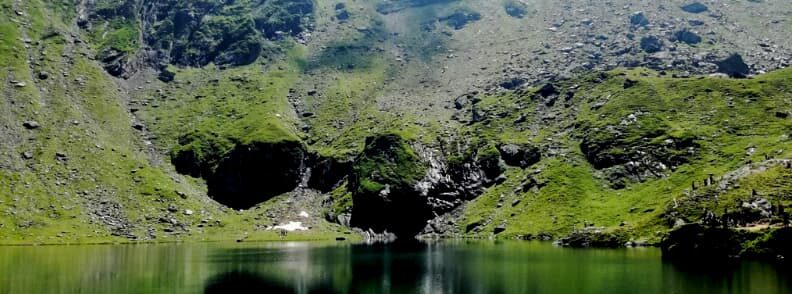
9. Bâlea Lake
At the other end of the Transfăgărășan, in the heart of the Făgăraș Mountains, there is a place where you can sometimes find some snow even in the middle of summer. That is on the shores of Bâlea Lake, a lake of glacier origins at 2,034 meters above sea level.
During the winter months, you can enjoy a special holiday, by staying at the Bâlea Lake Ice Hotel. A new hotel appears out of ice blocks every winter since 2006. You can add that to your list of reasons to visit Romania!
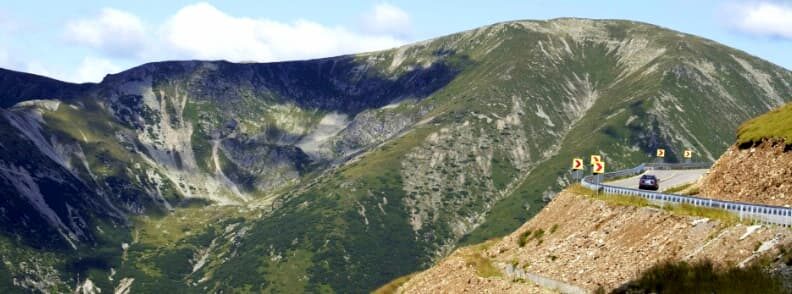
10. Transalpina
Despite Transfăgărășan being the most famous mountain road in Romania for tourists, it is not the highest one we have. Some say the Transalpina (or the Devil’s Path) is even more beautiful.
Though built long before the Transfăgărășan, its precise beginnings are unclear, with some sources mentioning it as a Roman strategic corridor. You see, even the Romans knew that there were plenty of reasons to visit Romania’s territory back then.
Transalpina reaches its maximum height of 2,145 meters in Urdele Pass, in the Parâng Mountains.
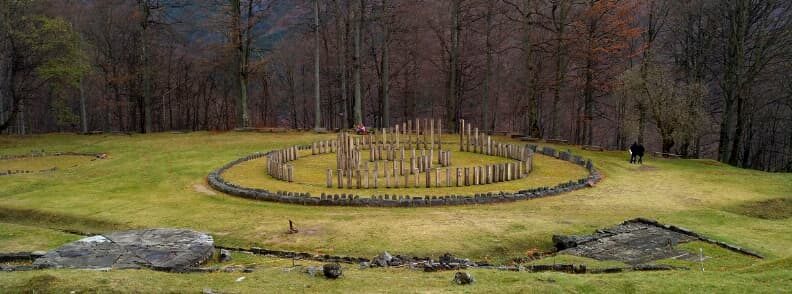
11. Sarmizegetusa
Since we spoke about the Romans, it is only fair to mention the Dacians, as well. Sarmizegetusa or Sarmisegetusa was the capital of Dacia, before their wars with the Roman Empire. The fortress had six citadels and it was the most important military, religious, and political center of Dacia.
About 40 kilometers away from Sarmizegetusa, there is also Ulpia Traiana Sarmizegetusa, the capital built by Emperor Trajan. Both sites are just ruins nowadays.
12. Moldoveanu and Negoiu Peaks
Moldoveanu is the highest peak in the Romanian Carpathian Mountains. It is part of the Făgăraș Mountains and it has a height of 2,544 meters. In the same mountains, you can also climb to Negoiu Peak, which reaches a height of 2,535 meters.

13. The Caraiman Cross
Not far from the Făgăraș Mountains, there are the Bucegi Mountains. Though at a lower altitude, they also have a lot of wonderful sights to offer. One of them is the Heroes’ Cross on the Caraiman Peak. The Cross was raised between 1926 and 1928, in memory of the railway heroes who died during World War I. The monument is 36 meters tall and located at an altitude of 2,291 meters.

14. Natural rock formations in Bucegi
On your way to see the Cross on Caraiman Peak, you can climb or take a cable car to see the Sphinx and Babele. These rock formations appeared following the constant erosion of the rocks by the powerful winds.
The Babele (Old Ladies) rock formation is associated with the Romanian legend of Baba Dochia (The Old Dochia).
15. Poiana Stânii
Poiana Stânii or Stâna Regală (translated as the Royal Sheep-yard), is a place located at an altitude of 1,285 meters, offering a wonderful view over the houses of Bușteni, Poiana Țapului, and Sinaia. The climb through the forest is wonderful, and, once you reach the top, you can also visit the Franz Joseph Rocks, Bogdan’s Cave, and the monastery and rocks of Saint Ana. All of these are in the close vicinity of the meadow.
16. Cantacuzino Castle
If you visit Bușteni, you should also climb Cantacuzino Castle. Raised in 1911 in a Neo-Romanian style for Prince George Grigore Cantacuzino, it is now a museum, housing interesting exhibitions. It is also nice to visit simply to have a coffee on its terrace while admiring a beautiful view over the Bucegi Mountains.
Cantacuzino Castle is where Tim Burton’s Wednesday series was filmed.
Are you still wondering what is Romania known for?
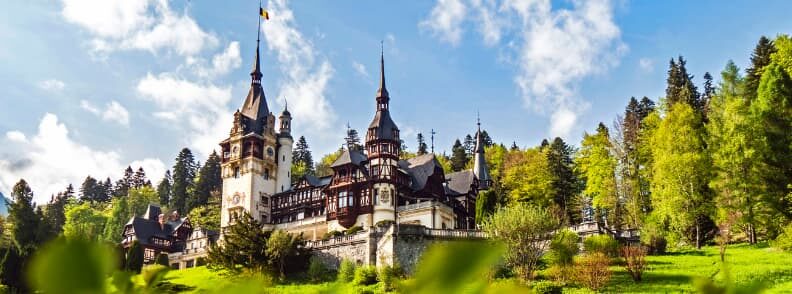
17. Peleș and Pelișor Castles
If you wish to learn more about royalty in Romania, you should visit Sinaia, known as the Pearl of the Carpathians. Here, you can discover two wonderful castles — Peleș and Pelișor, known together as the Peleș National Museum.
Peleș Castle was built between 1873 and 1914 by Carol I, Romania’s first king, to serve as his summer residence. Pelișor Castle was also built by him between 1889 and 1902, as a gift to the princes who will be heirs to the throne. The latter’s interior was done according to the taste of Queen Mary.
There are several other interesting castles to discover, as you’ll soon see by reading the rest of the reasons to visit Romania.
18. Seven Ladders Canyon
Close to the Bucegi Mountains, in Piatra Mare (Big Rock), there is a spectacular canyon carved in Jurassic limestone by a small river. On your visit to the Seven Ladders Canyon (Canionul Șapte Scări), you will climb on metal ladders and platforms, next to the seven waterfalls inside the canyon.
As a kid, this was my favorite travel destination in the mountains. If you have kids, maybe this is the best of all reasons to visit Romania.
When visiting the Seven Ladders Canyon, you can also go on the longest zip line in the country. It has a length of 2.1 kilometers and 23 routes for adults and children. The longest route is 273 meters.
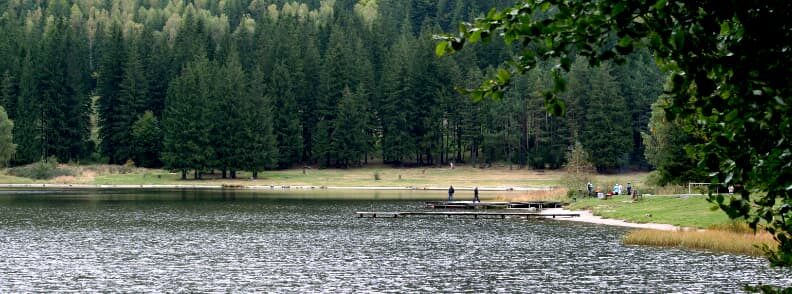
19. Saint Anne Lake
The Saint Anne Lake (Lacul Sfânta Ana), in the Mohoș Nature Reserve, was formed in the crater of the Ciomatu Mare volcano. It is the only volcanic lake in Romania.
Only 6.4 meters deep and with a surface of 220,000 square meters, it is supplied only by precipitations. In the past, people could swim in it, but this activity is forbidden to the public as of April 2018.
Saint Anne Lake is also a place often visited by brown bears, I have several friends with stories about bear sightings here.

20. Bear Sanctuary at Zărnești
Estimated at 7,000 individuals, Romania is home to the largest population of brown bears in Europe. So spotting a bear might be one of the top reasons to visit Romania for you.
However, if you really wish to see brown bears on your visit through the Carpathians, but would rather do it in safety, I suggest you stop for a visit at the Libearty Bear Sanctuary in Zărnești. Over 70 bears live in the sanctuary today.
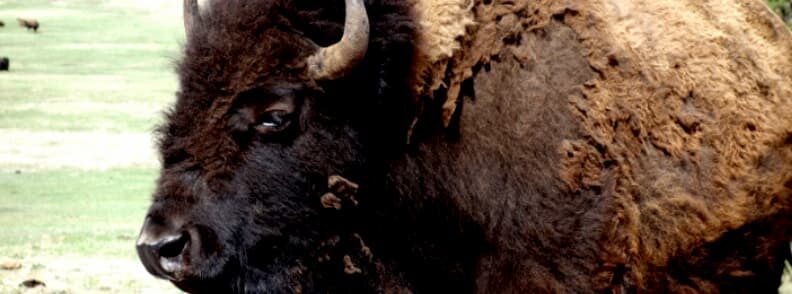
21. Bison in Romania
The European bison (Zimbru) is a rare sight in Romania, and can easily be seen in reservations or in zoos in our country. Under 100 bison have been released into the wild, after the species was re-introduced into Romania.
You can see the bison reservations when you visit Romania in four counties: Neamț, Buzău, Dâmbovița, and Hunedoara.
22. The Red Lake
Another unique lake for Romania is the Red Lake (Lacul Roșu), a natural damn lake formed in 1838, due to a landslide caused by a 6.9-magnitude earthquake.
Its name comes from the Red River, whose waters were red due to the layers of iron oxides and hydroxides it passed through. However, in German, the Red Lake is called the Killer Lake (Mördersee). There is a legend saying that the landslide covered an entire village and the waters of the lake turned red from all the blood of the people who lived there before.
23. The Bicaz Gorge
The Red Lake is within the Bicaz Gorge (Cheile Bicazului). Dug by the waters of the Bicaz River, this is now a passageway connecting the regions of Moldova and Transylvania. It is also a popular destination for rock climbing, so if that’s your passion, start planning to visit Romania.
24. Bezidu Nou
The Bezidu Nou Lake was formed after an artificial dam was built as a measure against the floods of the Cușmed River. This, however, meant sacrificing an entire village, Bezidu Nou. If you liked the sight of the Red Lake, you should probably also visit the sunken village of Bezidu Nou. Though a place with a sad history, it’s still interesting to see when you visit Romania.

25. Tihuța Mountain Pass
Further up North from the Bicaz Gorge, there is Tihuța Pass (Borgo Pass Romania or Bârgău Pass). Located at 1201 meters, it also connects the regions of Moldova (Vatra Dornei) and Transylvania (Bistrița).
The pass was made famous in Bram Stoker’s Dracula, where it was mentioned as the Borgo Pass. So Dracula fans might want to stop here when they visit Romania. The place, however, doesn’t look as if it belongs in a book of horrors, but rather in a fairy tale.
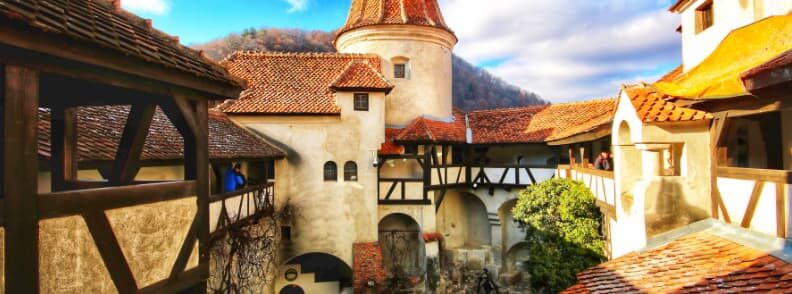
26. Bran Castle
Since I mentioned Dracula, a place that is always advertised as Dracula’s Castle is Bran Castle. While Dracula was inspired by Vlad the Impaler, it appears that the ruler never actually lived or visited the place. But forgetting about Dracula for a bit, the 1388 castle is still worth a visit.
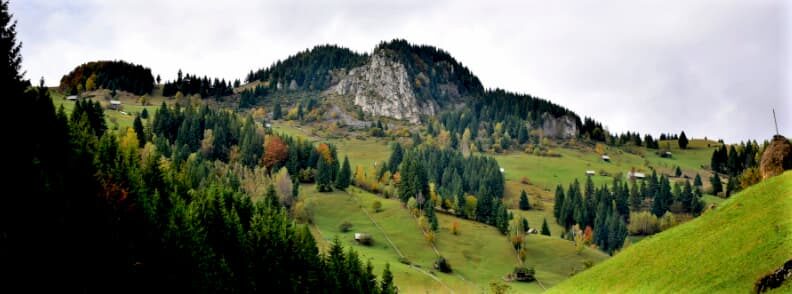
27. Rucăr-Bran Pass
At a height of 1,254 meters, the Rucăr-Bran Pass connects two counties: Brașov and Argeș. The area is popular with tourists because of the splendid natural views. Moieciu and Fundata, both areas within the pass, are among the top choices of travelers who visit Romania when looking for a mountain resort in the Southern Carpathians.
28. Poenari Castle
If you wish to see a castle that definitely had something to do with Vlad the Impaler, you go to Poenari Castle when you visit Romania. It is actually more of a fortress or a citadel than a castle, and nowadays it’s mostly in ruins. However, it is definitely worth climbing the 1,480 steps to reach it, not only to learn more about its history but also to enjoy the stunning views.

29. Sighișoara
Still following Dracula’s trail, we end up in the place where it is supposed that Vlad the Impaler was born. And this is where we drop the Dracula legend.
The inhabited medieval citadel of Sighișoara, listed by UNESCO in 1999 as a World Heritage Site, is very well preserved. There are many houses worth seeing, and one should also go on a tour to discover the towers, each associated with a guild.
You can experience more if you visit Romania during Sighișoara’s annual Medieval Festival.

30. Alba Iulia
Alba Iulia is a city located in Alba County, Transylvania. It is historically important not only to Romanians but also to Hungarians and the Saxons living in the region. Alba Iulia used to be the capital of the Eastern Hungarian Kingdom, and it later became the Principality of Transylvania.
It is also the place where, on 1 December 1918, the union of Transylvania with the Kingdom of Romania was proclaimed.
31. Brașov
Another walled-in city is Brașov. Here, too, you can walk to visit the well-preserved towers of the guilds, like in Sighișoara. You can also visit the imposing Black Church and St. Nicholas’s Church.
Personally, what I like best in Brașov is simply wandering the streets, checking out the beautiful buildings, and discovering all the lively cafes and restaurants which have appeared over the past decade.
A cute sight is Rope Street (Strada Sforii), one of the narrowest in Europe. Don’t skip it if you visit Romania and travel to Brașov!
32. Șinca Veche Temple Cave
About 50 kilometers away from Brașov, you can see the New Șinca Church and the Old Șinca Church when you visit Romania. The first may be beautiful, but it is of no comparison to the old one, built inside a cave. The Old Șinca Church (Șinca Veche) is also known as the Temple of Wishes (Templul Ursitelor). The exact moment when the monastery was carved inside the rock remains unknown, but historians believe it is around 70,000 years old.
People believe that Șinca Veche is a place where you can come to be cured of various illnesses and that once you find yourself beneath the surface, you instantly feel invigorated. They also believe that the entire area has magical properties, from the nearby spring whose water has healing properties to the grass the cows eat to give more milk.
33. Transylvania’s fortified churches
In the center of Romania, in the region of Transylvania, you will find many villages built around fortified churches. These were places to comfort the spirit of the villagers living in the area, but also a safe haven in case of invasion.
I think my favorite is the fortified church of Cisnădioara. Other well-known fortified churches in Transylvania are in Cisnădie, Biertan, Prejmer, Cristian, and Viscri. The latter are among those most mentioned in the guidebooks because they are located in scenic places.
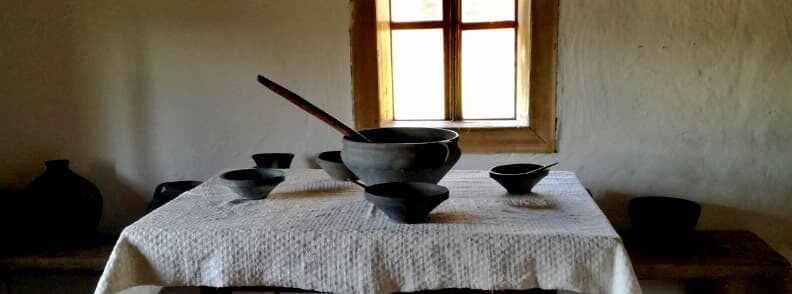
34. The village life
There is a great difference between Romania’s cities (especially the tourist ones) and its villages. You can see how poor our country really is if you go to rural areas when you visit Romania. People still have outhouses, there are homes without running water, and places where children walk for kilometers to go to school, to say the least.
Though living a simple life, villagers are welcoming, friendly, and hard-working people. Some of them are still working in the family business, which has been passed down through generations. However, though today you can still watch people involved in the old traits, it is unclear how these will survive in the future, with so many young people moving to the cities to have a better life.
For foreigners, what we still have is invaluable. One of them is Peter Hurley, an Irish guy who moved to Romania when he was 26 years old and fell in love with our country. You can discover some of our traditional crafts in Peter Hurley’s documentary, meant to promote the simple and sustainable ways of life in some of our villages.

35. The village museums
An easier way to discover rural life without leaving the big cities while you visit Romania is to visit the Village Museums built all over the country.
My personal favorite is the one from Sibiu, where the buildings are grouped by craft. The ASTRA Traditional Folk Civilization Museum takes about a day to visit properly and is also the place where you can find the house from the 10 RON banknote.
Another two Village Museums accessible to many people visiting Romania are the one in Bucharest and the one in Cluj Napoca.
36. The Maramureș Heritage Trail
If you have the time when you visit Romania, you can go by foot, bike, horse, or cart on the Maramureș Heritage Trail to discover village life first-hand. The Maramureș Heritage Trail is an 88-kilometer greenway, the first of its kind established in the northern side of Romania. It connects seven villages (Ocna Șugatag, Budești, Breb, Hoteni, Hărnicești, Desești, and Mara), representative of the culture and way of life in Maramureș.
37. The wooden churches of Maramureș
In Maramureș, you can find almost 100 Orthodox churches and a few Greek-Catholic ones, all built out of wood by skilled carpenters. The churches in this area of Romania have tall bell towers above the entrances. Eight of these churches are now listed as UNESCO World Heritage Sites, and two of them (from Budești and Desești) are also on the Maramureș Heritage Trail mentioned above.
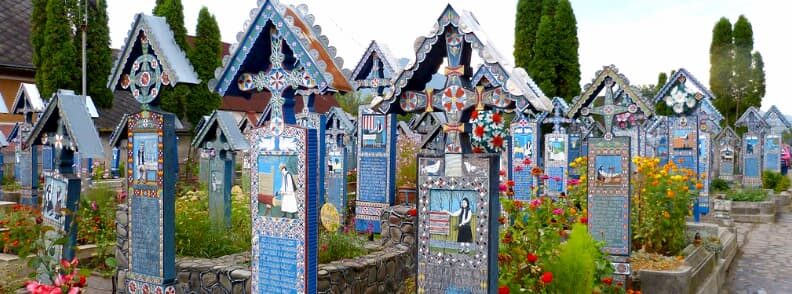
38. The Merry Cemetery
Another example of craftsmanship is the Merry Cemetery (Cimitirul Vesel), located in Săpânța, Maramureș. It is unlike any other cemetery: all its wooden crosses are painted in lively colors and they have funny descriptions of the lives of those who passed away.
It is believed that the local Dacian culture had an influence on the creation of the Merry Cemetery. The Dacians believed the soul was immortal and that death was a joyful moment, not a sad one. Before you visit Romania, discover more about the Merry Cemetery through the video below:

39. Bucovina’s painted monasteries
Located in the North of Moldova, Bucovina has several Byzantine-style monasteries, with skillfully painted outside walls. Some of the best-preserved ones are the monasteries of Humor, Moldovița, Pătrăuți, Probota, Suceava, Sucevița, and Voroneț. All of them, except Sucevița, have been added to UNESCO’s World Heritage Trail in 1993.
Voroneț is quite a sight. The color found on its exterior walls is known as Voroneț Blue – a unique shade of blue. You must catch a glimpse of it when you visit Romania if you go to Moldova.
40. The monastery built from a single oak tree
Mănăstirea Dintr-un Lemn can be translated as the monastery built from a single piece of wood. It is a small church, in Oltenia, built from a secular oak tree. The building is 13 meters long and 5 meters wide. It has no bell tower, reaching a height of only 4 meters. Yet another interesting sight for when you visit Romania.

41. Târgu Jiu
Târgu Jiu is a city in the Oltenia region in Romania, on the banks of the Jiu River. It is known for some of Constantin Brâncuși’s most famous works of art. The renowned sculptor was born in Hobița, close to Târgu Jiu.
In Târgu Jiu, travelers who visit Romania get to see The Table of Silence (Masa Tăcerii), The Gate of the Kiss (Poarta Sărutului), and the Endless Column (Coloana Infinitului).
42. Jiu Gorge National Park
Known in Romanian as Defileul Jiului, the area is split between two counties: Gorj and Hunedoara. It is an area inhabited by carnivores considered vulnerable in our country, such as brown bears, wolves, lynxes, otters, badgers, and wild cats. Defileul Jiului is also home to 701 plant species and 68 butterfly species so it’s quite a special sight when you visit Romania.
43. Densuș Church
Densuș Church, from Hunedoara county, is one of the oldest churches in Romania, still standing to this day. It is believed it used to be a pagan temple in the beginning, because its altar isn’t placed on the Eastern side of the building.

44. Corvin Castle
The Corvin Castle is also known as Hunedoara Castle or Hunyadi Castle (Castelul Huniazilor). Built in a Gothic-Renaissance style, it is one of the largest in Europe, so you should try to see it when you visit Romania.
45. Romania’s Tunnel of Love
At this moment, it is uncertain if the Tunnel of Love is going to survive, as it collapsed this year. If it is fixed, it will once again be a favorite photo location for couples and wedding parties alike.
Born from the vegetation growing on the abandoned railway between Caransebeș and Băuțar, it was often compared to the famous Tunnel of Love in Klevan, Ukraine. Hopefully, it will grow back and will truly be one of the reasons to visit Romania.
46. Nera-Beușnița National Park
Established in the ’90s, the Nera-Beușnița Park is located in Southwestern Romania, in Caraș-Severin County. It has a surface of 36,758 hectares and includes the 22-kilometer Nera Gorge, two beautiful lakes (Bei, and the Devil’s Lake), and two impressive waterfalls (Bigăr and Beușnița).
The Nera-Beușnița National Park is filled with magic and legends. And, at night, if you’re not too scared of the brown bears, you can find fireflies. If you love the outdoors, this is probably one of the best places to go when you visit Romania.
47. Bigăr Waterfall
Bigăr is an unusual-looking waterfall and it is often mentioned in articles as one of the most beautiful waterfalls in Romania or the world. Part of the Nera-Beușnița National Park, it is easily accessible from the main road when you visit Romania.
On 7 June 2021, this Bigăr waterfall collapsed under its own weight. Fortunately, it’s still one of the top places to visit in Romania.
48. The Devil’s Lake
In the beginning, the Devil’s Lake was subterranean, hidden inside a cave. However, it emerged when a part of the cave’s ceiling collapsed. With a surface of 20,000 square meters, Devil’s Lake is the largest karst lake you can see when you visit Romania. It is also the only one of its kind that we have, actually.
It is also a place surrounded by legend and people believe that those who jump in for a swim never return to its shores.
49. The Cave with Bones
When you visit Romania, you can stop at The Cave with Bones (Peștera cu Oase) in the Caraș-Severin county. Composed of a system of 12 karstic galleries and chambers, it is the place where some of the oldest early modern European human remains were found. They are estimated to be between 37,000 and 42,00 years old.
50. The Iron Gates Natural Park
At the border between Romania and Serbia, lies the Danube Gorge (Cazanele Dunării). It is 14.5 kilometers long and 230 meters wide. Close to its end, near Orșova, you can see on its Romanian bank the tallest rock sculpture in Europe, representing the head of Decebal, the last ruler of Dacia. The impressive sculpture, however, is not from that age — it was built between 1994 and 2004.
You can go on a boat ride on the Danube when you visit Romania and feel like you’re in the Lord of the Rings movie series.
51. Scărișoara Cave
Scărișoara is a glacier cave, located 1,100 meters above sea level. Travelers who visit Romania can see the 60-meter-long entrance shaft, the Great Hall, and the Church. Inside the Great Hall, there is the 18-meter-tall ice rock, the remains of a 3,500-year-old glacier, next to a pond called the Pool of Ice. Inside the Church, one can admire the more than 100 ice stalagmites hanging from the ceiling.
52. Coliboaia Cave
Not far from Scărișoara, and also in the Apuseni Mountains, you can see the oldest cave paintings in Central Europe known to man, inside Coliboaia Cave. The drawings are representations of animals, such as bears, bison, and rhinoceros. It is believed that the paintings from Coliboaia Cave are from the Early to the Middle-Upper Paleolithic.
However, it is difficult to be more precise, because the people who lived there in those times would have found bears and rhinoceros to be very scarce. In addition, it is very likely that the cave representations weren’t all done at the same moment in time.
It’s a unique sight and a good reason to visit Romania, don’t you think?
53. Meziad Cave
Meziad Cave is one of the longest caves you’ll see when you visit Romania, measuring 4.75 kilometers, over several levels. It was declared a monument of nature and was transformed into a reservation, being thoroughly researched by speleologists over time. They learned that Meziad Cave was inhabited by bears, and by Homo Sapiens. Today, it is home only to bat colonies.
Meziad’s 16-meter-tall entrance has been welcoming visitors since 1972.

54. Bears’ Cave
Another must-see when you visit Romania is the Bears’ Cave or Peștera Urșilor. Its name was given by the fact that in 1983 around 140 bear skeletons were found here, belonging to the extinct species of Ursus Spelaeus, the same species which inhabited Meziad Cave in the past.
The Bears’ Cave is formed of three galleries: Candles Hall, Emil Racoviță Hall, and Bones Hall.
55. The Farcu Mine Crystal Cave
Located in Pădurea Craiului Mountains, the Crystal Cave inside the Farcu Mine is the only one of its kind you can visit in Europe. There are only two crystal caves open for tourists in the world, with the other located in South Africa. Not a bad reason to come to Romania, I’d say.
The side of the cave accessible for tourists is about 60 meters long and there one can admire the beautiful white crystals, which have grown in various shapes. Besides the crystals, there is also a very interesting mining museum.
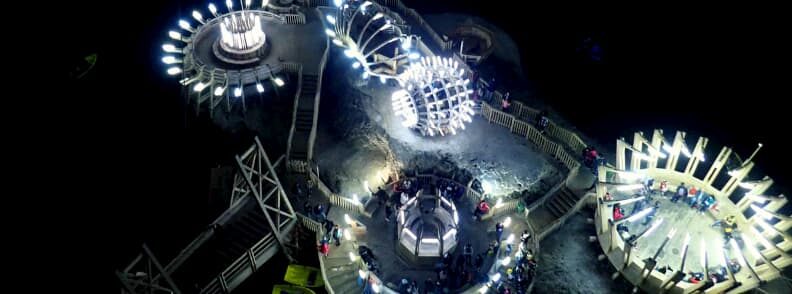
56. Turda Salt Mine
To the North of the Apuseni Mountains, about 30 kilometers from Cluj Napoca, you can find Romania’s most visited tourist attraction: the Turda Salt Mine. Though open for tourists since 1992, it became really popular after the 2008 modernization and improvement works.
Inside its beautifully lit halls, visitors can go on a carousel or a boat ride, play bowling and mini-golf, and also enjoy concerts sometimes. It also has several halo-therapy rooms.
For health, for relaxation, and/or some cool Instagram photos, the Turda Salt Mine is an awesome reason to visit Romania.
57. Hoia Baciu Forest
Also in Cluj Napoca’s vicinity, but in the other direction, one can go on a walk through the strange Hoia Baciu Forest. It is a beautiful sight due to its trees with leaning trunks, but it is also a place to step into the land of legends as you visit Romania. Hoia Baciu is believed to be a place where paranormal things happen, a sort of Bermuda Triangle of Romania, and many people who believe the stories are scared to venture.
58. The Blue Lagoon in Aghireșu
Still close to Cluj Napoca, you have Romania’s Blue Lagoon, in Aghireșu. This beautiful pool came into being through the accumulation of rainwater in the place of an old kaolin mining site. The stunning color is given by the kaolin (porcelain clay) residues.

59. The Mud Volcanoes
Another unique sight when you visit Romania is the Mud Volcanoes (Vulcanii Noroioși), located in Buzău County. Gases found up to 3,000 meters underground raise to the surface, pushing out a mixture of clay, mud, and saltwater. Once above the ground, the mud dries off and builds volcano-like cones around the eruption site. The ground is inhospitable to most flora and fauna, and the area resembles a desert.
60. The Living Fire
Close to the Mud Volcanoes, and also happening because of gases coming to the surface, is the Living Fire close to the village of Terca. The gases turn to flame thanks to sunlight or to the tourists who give them a hand with a match or a lighter in case they have been extinguished. The height of the Living Fire depends on the weather and on the pressure of the underground gases.
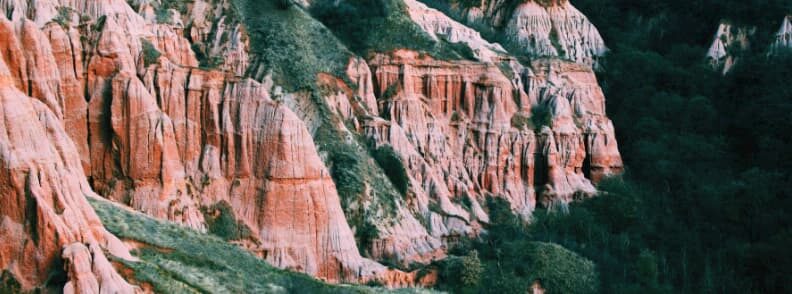
61. The Red Ravine
Referred to as Romania’s Grand Canyon, the Red Ravine (Râpa Roșie) from Alba County is an 800-meter-long wall, almost vertical. True to the nickname, the type of micro-relief encountered here is actually categorized as badlands, the same as for the Grand Canyon in South Dakota. So if you don’t have the time or money to go to the US, come to visit Romania.
62. Trovants
In Vâlcea County, you can visit the outdoor Trovants Museum. Erroneously named growing boulders or living stones, the Trovants are formed in a similar way to the stalactites and stalagmites found in caves, through the deposit of layers upon layers of sand. It takes a lot of time for the living & growing rocks of Romania to be formed, as they only grow around 5 centimeters in about 1,200 years.
63. The Woman’s Cave
The Woman’s Cave (Peștera Muierii) is a complex 7-kilometer-long cave system in Gorj County. It is the most visited cave in Romania, though tourists can only visit one of its 4 levels.
Scientists discovered here the remains of three early Modern humans. One of them was identified as a woman, hence the name of the cave.
64. Văcărești, Bucharest’s “Delta”
You’d be surprised to learn that you don’t even have to leave Bucharest, Romania’s capital city, to immerse yourself in natural beauty when you visit Romania.
In the place of an abandoned project for an accumulation lake, nature took over. Today, the area is a protected Natural Park, home to over 95 bird species, but also to small mammals like rabbits, foxes, and even otters.
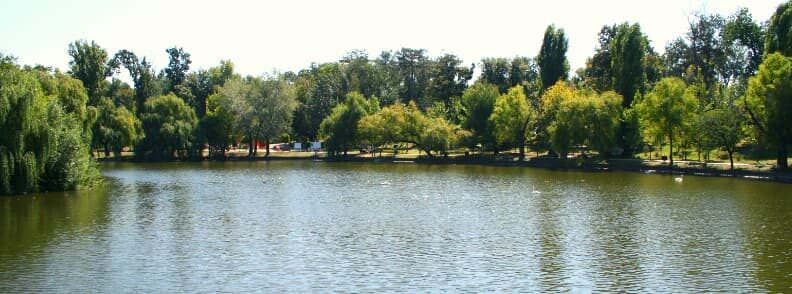
65. Parks of Bucharest
You don’t have to go to the Văcărești Delta to get a breath of fresh air, as Bucharest has lots of parks in which you can go for a walk, a run, or a bike ride. The best thing is that they don’t close in the evenings, so you can have a stroll whenever you want.
66. Bellu Cemetery
The historic Bellu Cemetery (Șerban Vodă Cemetery) is unlike others in Bucharest, as you’ll see if you come here when you visit Romania. It has tall trees shading its alleys and beautiful monuments stand to mark the lives of those who have passed. Bellu certainly doesn’t give the eerie feeling a cemetery usually has.
It’s worth a visit to see the burial sites of renowned Romanian writers, painters, actors, and important figures in history, as well.
In September, when we celebrate Bucharest’s Days, there are also concerts in this location. Nothing wild, though, don’t worry.
67. Bucharest’s Old Town
But maybe you’re into the wild, so let’s skip to Bucharest’s Old Town, a place now conquered by restaurants, bars, and clubs, open until late. Or until early in the morning.
Almost all travelers who visit Romania end up here. It’s the place with the most nightlife entertainment options per square meter in the capital.

68. Traditional Romanian food
Speaking of restaurants, odds are you’ll try Romanian food for the first time in the Old Town when you visit Romania. Probably at one of the very popular restaurants, such as Hanu’ lui Manuc (Manuc’s Inn) or Caru’ cu Bere (The Beer Wagon). While very crowded and more expensive than other options, they offer not only traditional food and drinks but also Romanian music and dance shows, in a historic setting.
While Romanian food is heavier than what some people are used to, it is worth a try. Romanian cuisine is influenced by the cuisines of our neighbors from the present and our invaders from the past. I recommend you try these when you visit Romania:
- ciorbă de fasole cu afumătură în bol de pâine (smoked ham and beans sour soup, served in a bread bowl)
- sarmale (minced meat in grapevine leaves or cabbage leaves)
- mici (spicy minced meat in the shape of sausages)
- bulz (polenta, burduf and caș — local cheeses, slices of sausages, smoked bacon, sometimes a sunny-side-up egg)
- tochitură moldovenească (a dish from Moldova, with polenta and spicy bits of pork meat, usually mixed with bits of pork liver and other organs, though not always; normally served with a sunny-side-up egg)
- and, for dessert, don’t skip the papanași (fried Romanian doughnuts with cheese mixed in the dough, soft on the inside, crunchy on the outside, with crème fraîche and jam on top).
69. Romanian wine
To go with our heavy food, you should try one of our excellent wines when you visit Romania. We have a tradition of over 3,000 years in wine-making. Our accessible prices and great products have put us on the map next to other important wine-making European countries, such as France or Italy.
Foreigners don’t fall in love only with the finished product, but also with our rich soils and productive vineyards, and end up relocating to become winemakers in Romania.
While you visit Romania, try tasting a Fetească Neagră (Black Maiden) wine.
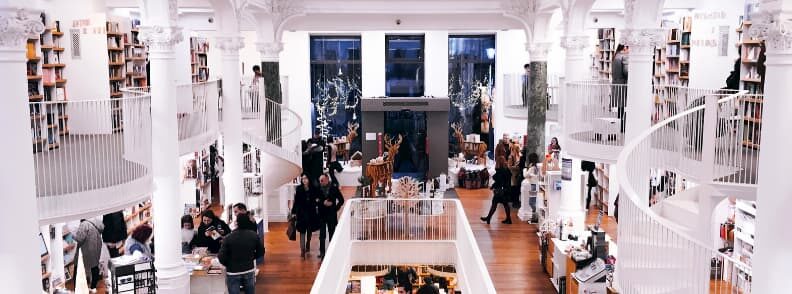
70. Cărturești Carusel
I don’t know about you, but I don’t consider a trip complete unless I visit a bookshop. So while you visit Romania, if you find yourself in Bucharest, in the Old Town, why not stop at one of the most beautiful bookshops in the world?
Inside a 19th-century building, the Cărturești Carusel bookshop is spread over 6 levels and has a total of 1,000 square meters. It has books in Romanian and English, games, music and movies, a tea house, and tea shop, stationery, plus lots of great and quirky gift ideas.
71. The Romanian Kitsch Museum
Still in the Old Town, you will learn that Romanians have a sense of humor and they are more than capable of making fun of themselves. In a small building by Covaci Street, you get to discover all that is in poor taste about the way we lived in the past and still do, in some cases. You will laugh at Dracula, explore a small apartment from the Communist times, and learn about cocalari and pițipoance, if you don’t yet know about them.
It’s not necessarily a must-see when you visit Romania, but it’s fun to go here, you can dress up, touch things, take photos And it’s very small, it doesn’t take much time.
72. The Museum of the Communist Consumer
Another interesting museum to see when you visit Romania is in Timișoara, the place where the revolution against the Communist regime started in 1989. The entire place is set up as a typical apartment from the Communist times, and visitors can explore in-depth how people used to live back then, from what the furniture looked like to what kind of items they had in their pantry.
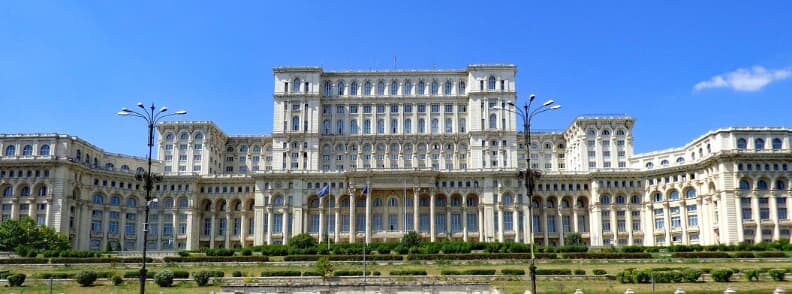
73. The House of the People
Back to Bucharest, we go to the House of the People or the Palace of Parliament, a huge mark left in history by Ceaușescu. The heaviest and most expensive administrative building in the world, the House of the People (Casa Poporului) is the second-largest administrative building in the world, after The Pentagon.
While the building is impressive, it meant a lot of sacrifices for the Romanians. This is actually why it is called the House of the People: everybody contributed in one way or another to the raising and decorating of the establishment.
However, it seems to be one of the places all foreigners want to see when they visit Romania.
If you come for a visit to the House of the People, you should visit the National Museum of Contemporary Art, too. The Museum also has a terrace offering a beautiful view over Bucharest.

74. Unirii Boulevard
In front of the House of the People, Unirii Boulevard elongates all the way to Alba Iulia Square. Ceaușescu was also the one behind the building of this avenue, taking advantage of a large number of buildings demolished in the area by the 1977 earthquake. In addition to those, the Communist ruler demolished several others, relocating the people who had lived there all their lives before the unfortunate event.
Built to be greater than Paris’s Avenue des Champs-Élysées, Unirii Boulevard has a length of 3.5 kilometers. Recently, the fountains on this grand avenue were renovated and every weekend, in the evening, they offer a show of water and lights. This is what you may also see when you visit Romania:
75. Calea Victoriei
A much lovelier avenue to explore is Calea Victoriei (Victory Way). When my grandparents were young, this was the place to go out in your best clothes, observe others, and get noticed in return. Going for a walk on Calea Victoriei was a favorite weekend activity. While it may have lost part of its charm from back then, Calea Victoriei is still worth exploring by foot when you visit Romania.
It unites several landmarks, and it has beautiful passageways and entrances to interior courtyards. My favorite passageway is the English Passage, though it reminds me more of Venice or Italy, in general than of any other place.
76. The Royal Palace
On Calea Victoriei, in Revolution Square, there is The Royal Palace, housing the National Museum of Art of Romania. It is interesting to explore the building when you visit Romania, though a lot of its interior isn’t palace-like, it’s rather more fitting for its purpose as a museum.
The National Museum of Art of Romania is the place to go to have a taste of medieval and modern Romanian Art but also to discover the international collection of the Romanian royal family.
Nicolae Grigorescu, Theodor Aman, and Theodor Pallady are among the well-known Romanian painters whose works you can admire in the National Museum of Art of Romania.
77. Romanian Athenaeum
Not far from the Royal Palace, you can see the beautiful building of the Romanian Athenaeum (Ateneul Român). This is a concert hall and the home of the George Enescu Philharmonic Orchestra.
Built with a combination of neoclassical and romantic styles in the year 1888, the Athenaeum is a jewel of a building. The large concert hall is circular and has this incredible fresco, the work of Costin Petrescu. The 75-meter-long and 3-meter-wide fresco depicts important moments from the history of Romania, starting with Dacia and ending with 1918 when Greater Romania was born.
It is really worth coming to a concert here when you visit Romania, especially for the perfect acoustics of the Athenaeum.
78. Cotroceni Palace
Moving on to yet another palace in Bucharest, we go to the official residence of our Presidents, the Cotroceni Palace, which is actually the old Royal Palace.
Here, you can visit the Cotroceni National Museum, and explore a series of rooms decorated by the Queen Mary. The Cotroceni National Museum also hosts Queen Mary’s incredible art collection.
79. Therme Bucharest
Believe it or not, there are lots of people who are coming to Bucharest when they visit Romania not to discover the streets and old neighborhoods of Le Petit Paris or its museums but to go a bit outside the city and pamper themselves at Therme.
The place has 3 areas, with various things to offer. The Galaxy area is destined for families and it has lots of fun slides and an interior pool with waves for the kids to enjoy. In the Palm area, people relax in a large indoor and outdoor pool with pool bars and jacuzzi chairs, and long chairs. Last, but not least, there is the Elysium area, with 6 different saunas, a Calla Lilly high-pressure cold shower, and pools with various minerals.
All the water comes from thermal springs, so it’s always warm and it’s a delight to have a drink in the hot outdoor pool in the middle of Winter.
80. The Thermal Baths of Herculane
Speaking of thermal baths, if you’re venturing out of Bucharest when you visit Romania, then you should pay a visit to the spa town of Băile Herculane, in the Caraș-Severin county.
It is said that this is the place where Hercules battled the hydra, their fight shaping the gorges and other features in the surrounding scenery. It is also said that the springs in which Hercules bathed here gave him the strength to continue the battle and finish the mythical beast.
While Hercules’s visit is a legend, it’s a fact that the Roman aristocrats were attracted to this town and they turned it into a leisure center, which it remained to this day. During the communist regime, the buildings stayed luxurious and were very well maintained, but over time they went into decay. However, in recent years, the old establishments have started going under restorations and hopefully, one day, Băile Herculane will once again be as mighty as in their past.

81. Dobrogea’s fortresses
Dobrogea is the southeastern region of Romania, which has been inhabited since the Neolithic. The Persians, the Romans, the Ottomans, and several migratory peoples have at one point been through this area by the Black Sea. As you visit Romania, you can discover here their traces to this day through the various ruins, archaeological sites, and fortresses of Dobrogea. Capidava, Enisala, Tropeum Traiani, and Histria are among the most important of Dobrogea’s fortresses.
82. Vederoasa Lake
Also in Dobrogea and close to the city of Constanța, one can find scenery similar to the one in the Danube Delta, at Vederoasa Lake and its surroundings. In 2007, this became a protected area, as it is home to almost 100 bird species. Most of them are migratory birds, and several of them are classified as endangered. So birdwatchers should add this lake to their list when they come to visit Romania.
83. Chalk Lake
Another interesting lake to see in Dobrogea while you visit Romania is Chalk Lake (Lacul de Cretă), close to the wine region of Murfatlar. In a white, almost desert-like area, there is this beautiful lake with turquoise water.
Not far from Lacul de Cretă, you can visit the Basarabi-Murfatlar archaeological site, dug into a chalk hill. It is the place where you can see the first church that ever existed on Romania’s territory.
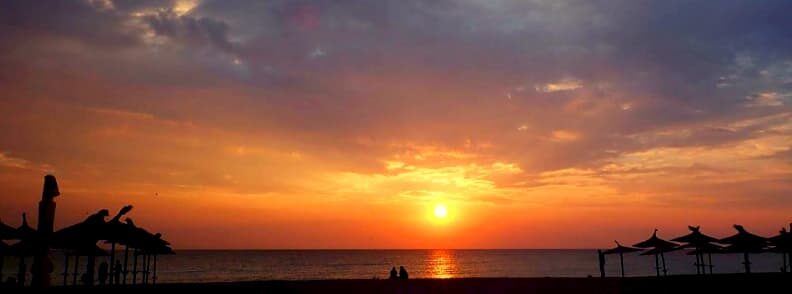
84. Vama Veche
By the Black Sea, and at the border with Bulgaria, there is the once-hippie village of Vama Veche. The preferred local seaside destination for hippies and rockers in the past, it is now a popular party destination for people of all ages, no matter the music genre they listen to. It’s a cool spot to party when you visit Romania.
My husband describes it as a festival village. Here, you have loud music playing at every bar and terrace on the seashore, every night, from May to September. And, at dawn, the most popular place to be is Stuff, where they play Ravel’s Bolero when the sun rises up from the sea. It’s a beautiful moment when everybody who has partied and drank all night gathers next to the sea and watches the sunrise together.
85. Wild Beaches by the Black Sea
Vama Veche has changed a lot from its beginnings as a place where people went with tents and gathered to play music on their guitars around a fire on the beach.
It can still be just you and the sea (and some others like yourself, but farther away) if you prefer to enjoy the silence of one of Romania’s remaining wild beaches. If this is your perfect scenario for being at the beach, you should go to Vadu, Corbu, Gura Portiței, Tuzla or Sulina. Be wary of the fact that the closer you are to where the Danube reaches the Black Sea (e.g. Sulina), the less clean the water will be, though.
86. Dolphins in the Black Sea
The Black Sea has three species of dolphins. However, the number of dolphins in the Black Sea is becoming smaller and smaller, with only 19,000 individuals in the territorial waters of Romania.
Even so, you can still spot them in the areas where the Black Sea’s waters are the clearest, even in crowded places like Vama Veche.
87. Anonimul International Independent Film Festival in the Danube Delta
Every August, around 5,000 film lovers travel by boat to St. George (Sfântul Gheorghe), in the Danube Delta. In this beautiful setting, where the Danube flows into the Black Sea, there is Film Village, with all the necessary amenities an attendee might need.
Projections take place in a cinema, but there is also an open-air screen, in the camping area. Guests don’t have to stay only in tents though, as there are cabins and guesthouses, as well.
88. Transilvania International Film Festival in Cluj Napoca
A more popular choice for a film festival in Romania (or Southeastern Europe) is TIFF or Transilvania International Film Festival. The festival takes place every June, in Cluj Napoca, and it gathers around 80,000 guests. They are all interested in watching approximately 250 films during about 400 screenings in cinemas, but also in unexpected, scenic surroundings, from over 50 counties. Guests also have the chance to meet their favorites from over 1,000 guests from the movie-making industry.
89. Untold Electronic Music Festival in Cluj Napoca
Another event bringing lots of tourists to Cluj Napoca is the electronic music festival, Untold. Winning the title of Best Major Festival in the 2015 European Festival Awards, the annual event takes place in August and gathers crowds of over 300,000 guests.
I haven’t been yet, but those whom I know and have attended went there not only for the music but for the experience. Even if they weren’t fans of electronic music, they enjoyed Untold so much that they also became part of those who plan to attend this festival every year.
This is what Untold looked like in the 2018 edition and you see why people make it one of their summer holiday plans every year:
90. Astra Film Festival in Sibiu
Going back to the subject of international film festivals, Astra Film Festival has recently celebrated its 25th edition this year. On this occasion, the documentary film festival scheduled a week with over 40 movie-related events, in 9 locations in Sibiu.
Astra Film Festival takes place every year, in October.
91. Sibiu International Theatre Festival
While it isn’t the only international theatre festival in Romania, the one in Sibiu (Festivalul Internațional de Teatru Sibiu – FITS) is my favorite. Check this video below to get a taste of it:
Sibiu’s International Theatre Festival also celebrated its 25th edition this year.
92. Gărâna Jazz Festival
Every year, in July, around 10,000 music lovers gather in the mountains, to attend Gărâna Jazz Festival. Well-known bands and players entertain the public in a wonderful and simple setting.
Check out their video from the 22nd edition to know what to expect if you’re going to the Jazz Festival in Gărâna Romania:
93. George Enescu Festival in Bucharest
George Enescu was a famous Romanian composer and violin player. Three years after his death, in 1958, the first edition of the classical music festival bearing his name took place. It initially took place once every three years, but in the ’80 it became less regular. After a Government decision in 2002, it was established that the festival is to take place once every two years. Hence, in uneven years, in September, the concert halls of the Romanian Athenaeum and the Radio Hall are expecting their guests.
If you wish to attend the festival, make sure you book your tickets fast.
94. Summer Well
In the outskirts of Bucharest, in Buftea, there is Summer Well, advertised as a festival like a holiday. Held in the Știrbey Domain, it brings well-known bands and fun experiences for its guests.
Summer Well is usually scheduled for a mid-august weekend, with three evenings full of concerts. The organizers admit it themselves that it’s a festival for hipsters, and in 2014 a friend from That Thing worked on their ironic festival video. The video is about a British guy who flies to Bucharest, explores the city a bit, and then joins the fun at Summer Well.

95. Traditional folk festivals
There are lots of festivals around certain local foods and/or drinks, or around traditional music and dancing, all around the country.
In the photo, you can take a glimpse at the Cheese and Palincă Festival, in Rășinari, Sibiu county. The festival is about the traditional local drinks, palincă and țuică, the famous Sibiu cheese and other Romanian food, and Romanian folk dances from the Sibiu area.
96. Free cultural events
If you live in or visit one of the larger cities in Romania, you can take part in lots of cultural events, for free. There are concerts, nights of the art galleries, nights of the museums, various markets, plus the usual Christmas and Easter markets.
97. Romania’s affordable
Not only are there lots of free things to do in Romania, but most of the paid ones are affordable, even cheap to most tourists. The low cost of living makes Romania a great choice for expats. So, instead of just visiting Romania, you might also consider moving here for a while or for good.
98. The Orient Express
Of course, Romania can also be a luxury destination. Bucharest was one of the stops on the route of the Orient Express, the luxurious train connecting Paris to the East of Europe.
You can find high-quality hotels and fancy restaurants in Bucharest or the rest of the country just as easily as you can find them in other European countries.
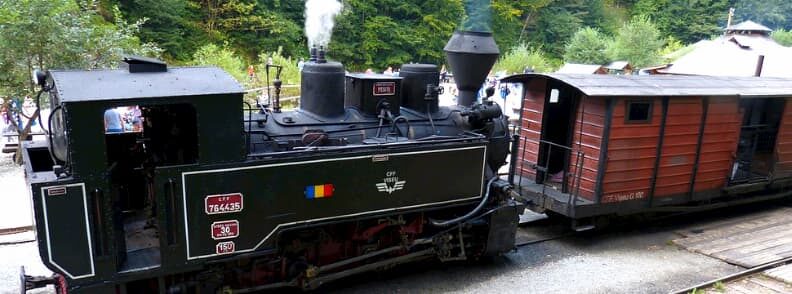
99. Mocănița
While the original Orient Express no longer exists, if you’d like to try riding an old train, you can go on one of the narrow-gauge steam trains that still run in Romania.
The most well-known is the one in Vișeu de Sus. However, don’t expect to find the same luxury as on the Orient Express, as this one is mostly meant for carrying wood.
While it’s always a fun ride, taking the steam train on a New Year’s tour can be even more exciting.
100. Our Internet speed is amazing!
Last, but not least, Romania’s got cheap high-speed Internet, connecting us to the world day after day. In 2013, Timișoara became the city with the highest download speed in the world.
The end…?
My list is done, but I am open to new ideas as honorable mentions. Just send me an email at mirela[at]the-travel-bunny[dot]com. If you are a travel blogger, I will also add a link to your blog!

Mirela Letailleur is a Romanian travel blogger living in the South of France. She writes on The Travel Bunny travel blog about affordable travel in Europe, creator of unique free travel guides, local travel expert. Problem solver. Wannabe coffee guru.
After you plan your visit to Romania, check out
Things to do in Timișoara in a weekend
Top 10 Transylvania castles: Guide to Romania’s legendary landmarks
Most beautiful Black Sea beaches: the perfect destinations for sun, sand, and sea

